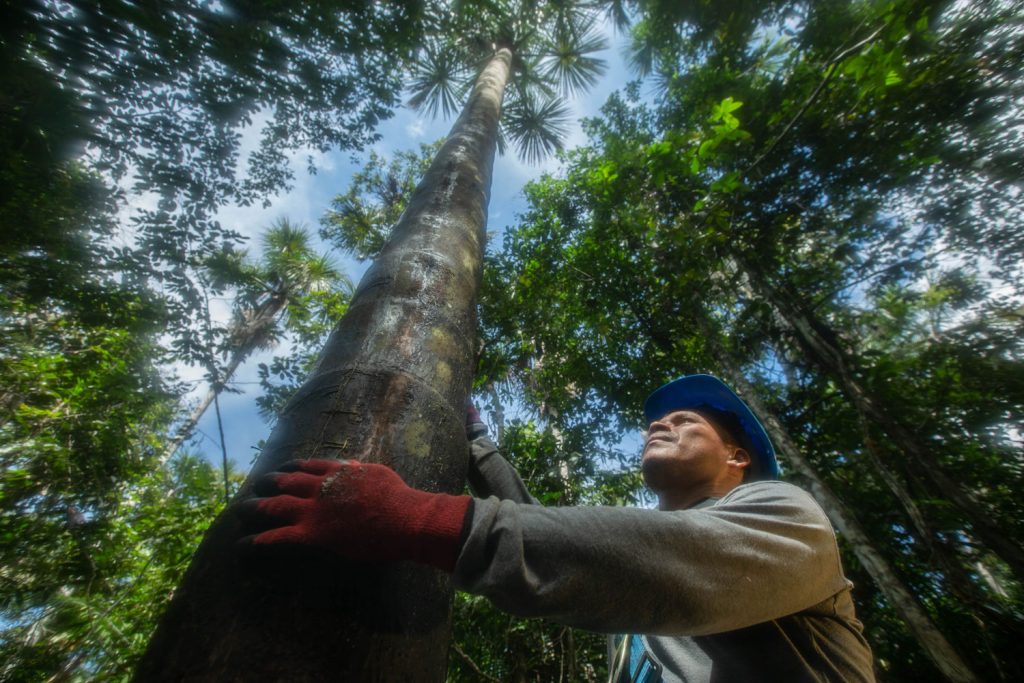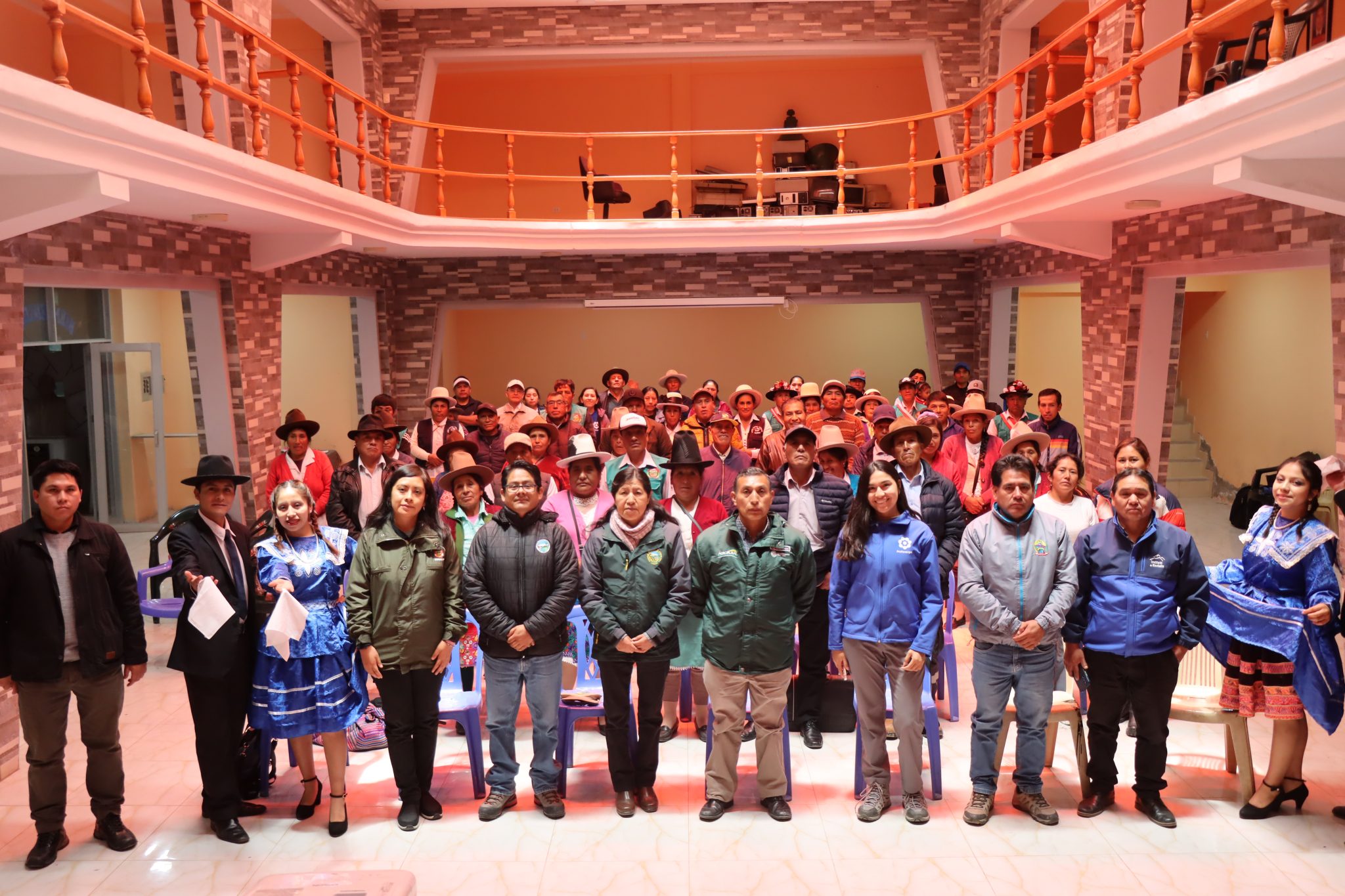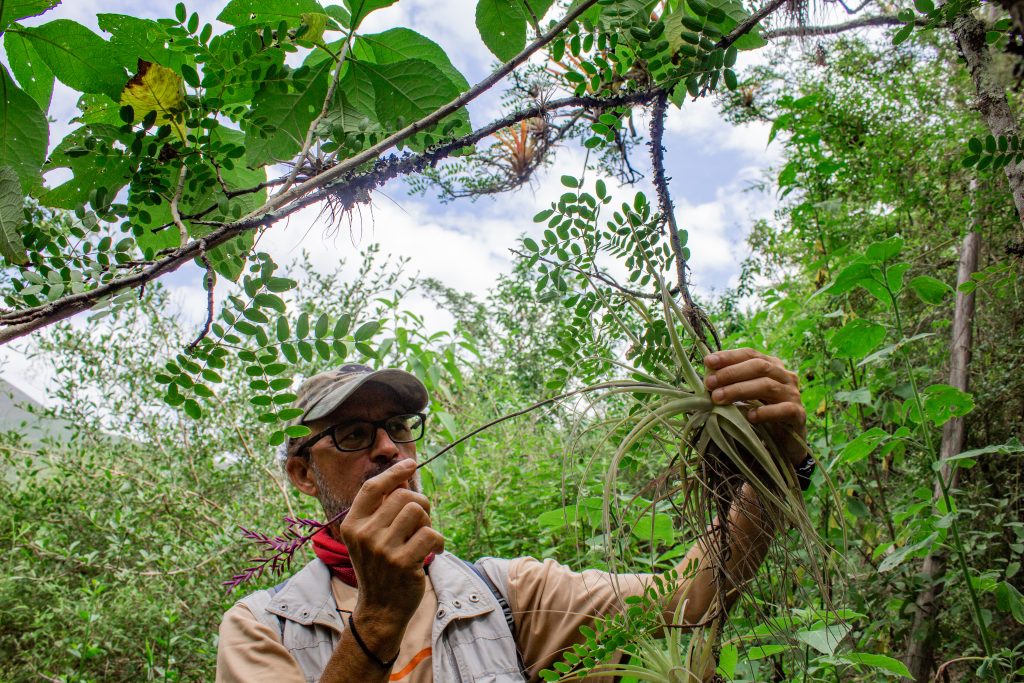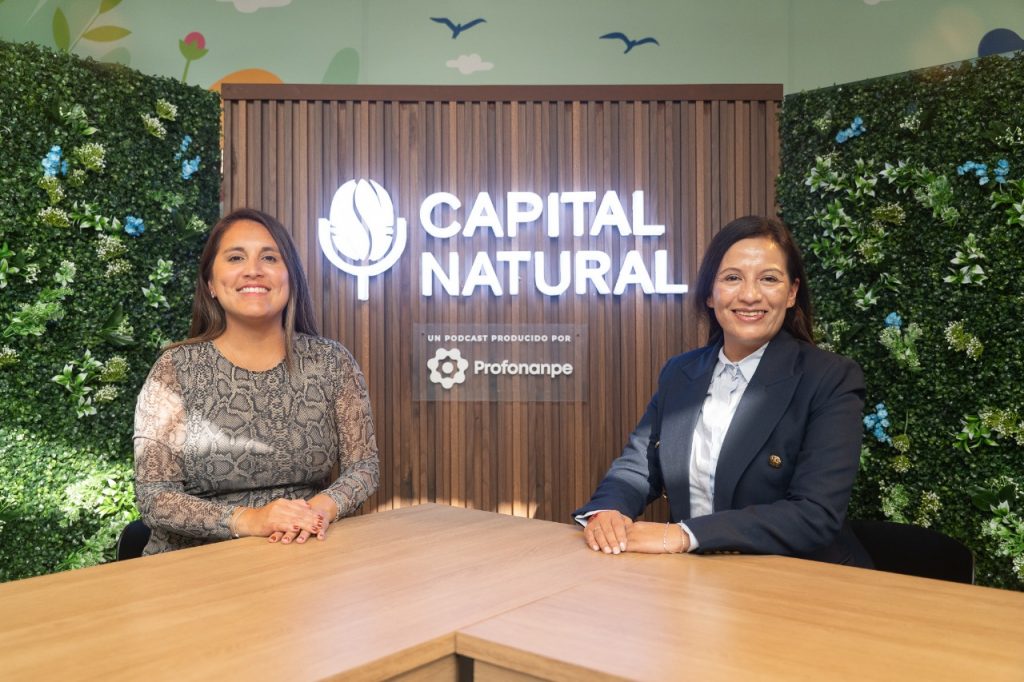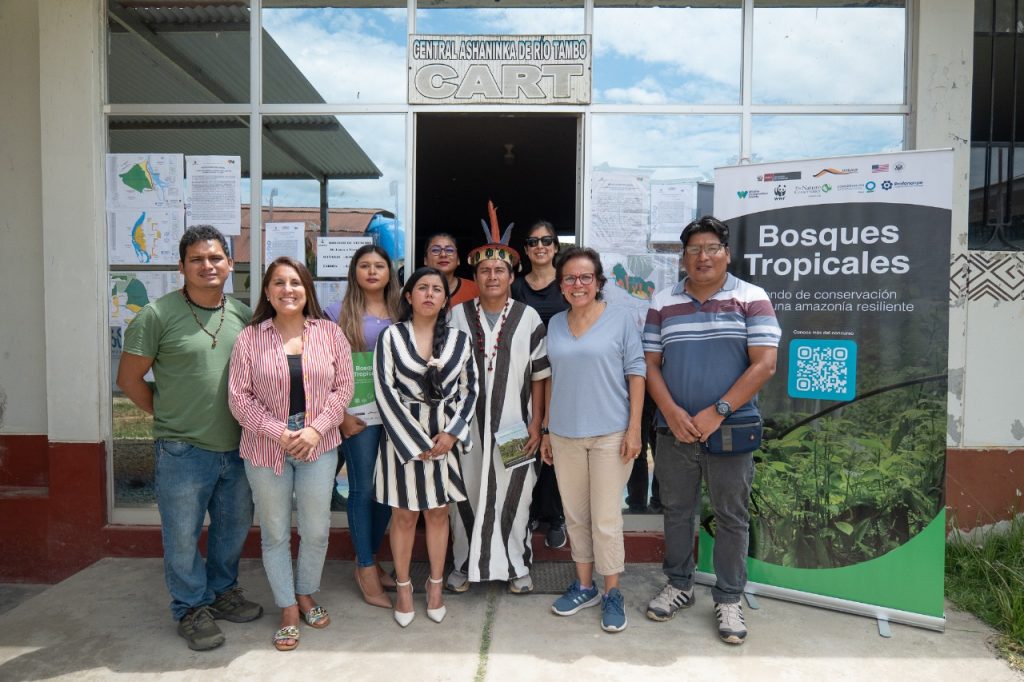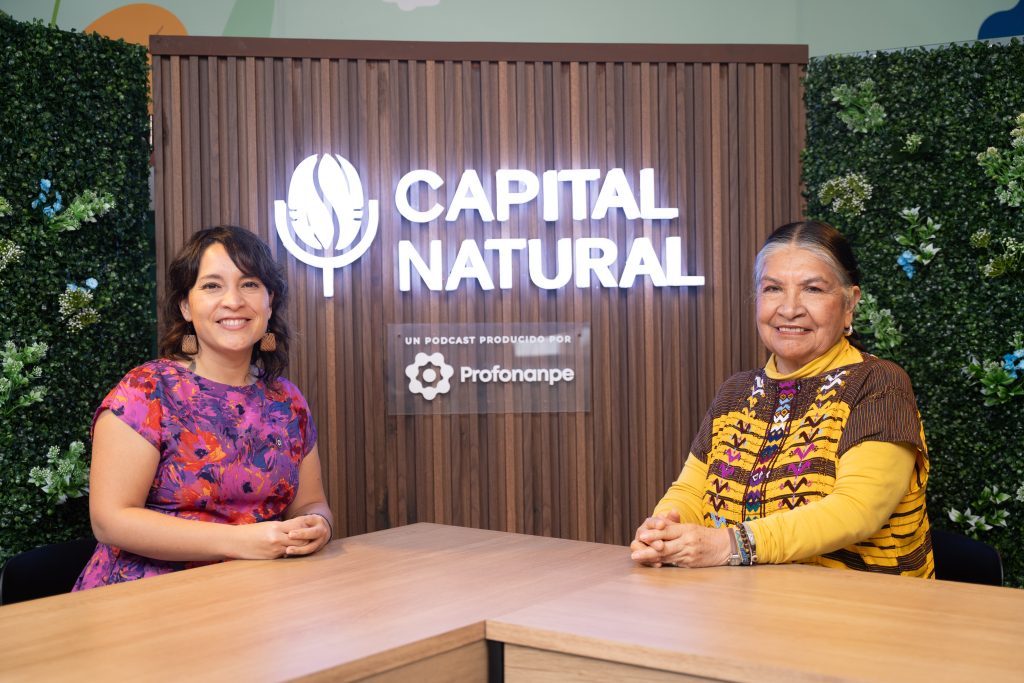The aguaje palm (Mauritia flexuosa) is one of the predominant species of the Amazon. The wetlands they form, with their tall trunks and deep roots, retain large quantities of water, which they gradually release, regulating the region’s hydrological cycle. The aguajales are home to a unique and complex fauna, most of whose mammals and birds feed directly on their fruits. The water released by the roots transports nutrients that allow the metabolism of the water bodies and the development of fish. Thus, a single species plays a fundamental role in the structure of the forests of the entire Amazon biome.
However, despite its importance, the aguajales are at risk due to poor extraction of their fruits. To understand the problem, it is necessary to be aware of two things. First, aguaje palms are dioecious plants, which means that in their population there are male and female specimens, and the balance between the sexes is essential for their reproduction: females produce fruit after being pollinated.
Second, their height must be taken into account: palm trees can reach up to 35 meters in length, so felling them is the easiest way to extract their berries. An axe or electric saw can cut 50 to 100 palm trees a day, which is convenient for immediate extraction, but profoundly negative for the sustainability of the ecosystem: the “logging of female trees” leaves barren forests that cannot regenerate. This drastically alters the quality of the water sources, affects the habitat of its own fauna, and severely restricts its reproductive cycle. However, this is not the only thing.
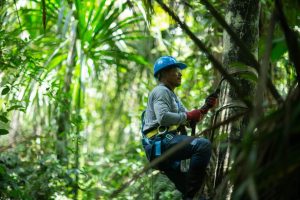
Segundo Chanchari is an aguaje palm climbing technician and community trainer. He promotes the sustainable use of the aguaje palm fruit.
The organic soils of the aguajales also store a large amount of carbon. The palms remove gases from the atmosphere and store them in the swamp soil, helping to regulate the planet’s climate. In the Abanico del Pastaza, a vast complex of aguajales and flooded forests located in the provinces of Datem del Marañón, Alto Amazonas and Loreto, carbon deposits represent the equivalent of the last 60 years of greenhouse gas emissions produced by human activities in Peru. Therefore, if we want to avoid climate catastrophe, this type of wetlands must be conserved and the carbon accumulated over thousands of years must be prevented from being returned to the atmosphere.
The logging of female trees is not only negative for the environment. According to researchers from the Peruvian Amazon Research Institute (IIAP), 1400 hectares of aguajales are lost every year in Loreto alone, which seriously affects the productivity of the resource. Based on controlled observation, the researchers find that after five years of unsustainable extraction, the number of productive palms decreases from 66 to 29 per hectare, representing a reduction from 132 bags of fruit in the first year to 61 in the fifth year. This means that productivity decreases by more than 50% in the short term, with an exponentially negative trend in the medium and long term. The current situation is unsustainable.
What to do? Well, act immediately, establishing effective management plans for the aguajales and monitoring technologies by the authorities. Particularly, it is important to change the extraction method: the proper way to obtain the fruit consists of climbing the palm tree, which guarantees an exploitation cycle of between 40 and 50 years, and the continuity of the ecosystem. This requires a major change in attitudes, both in the producing communities, intermediaries and end consumers. It also involves investing resources: safe climbing equipment is expensive and there is an urgent need for synergies between the public and private sectors to achieve effective change.
For more than 10 years, Profonanpe, the private Peruvian environmental fund, and the National Service of Protected Natural Areas by the State (SERNANP) have joined forces with the communities of Pacaya Samiria to promote the sustainable extraction of aguaje through climbing technology. In recent years, presided over by the participatory elaboration of management plans, native communities of Datem del Marañón have initiated a similar process. In the Kichwa community of Puerto Díaz, for example, the Chanchari family uses equipment that allows them to climb between 20 and 30 palm trees a day, and its members play an active role in changing practices. Segundo Chanchari, former president of the community, is dedicated to convincing neighboring towns of the importance of climbing the palm trees instead of felling them. His example must be followed and the country must be convinced of the urgency of this task.


